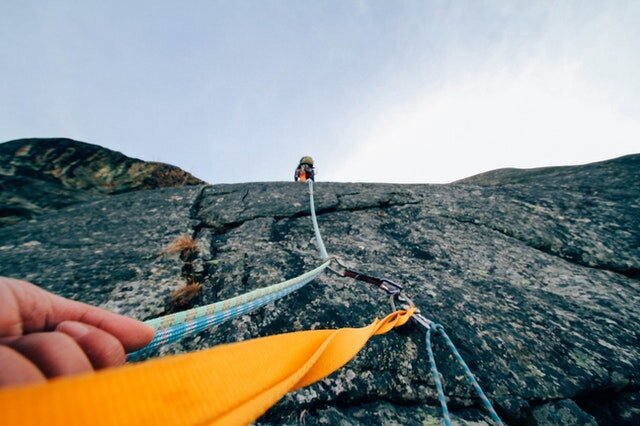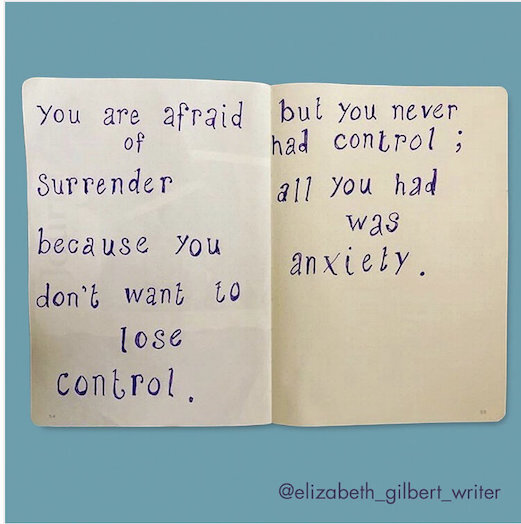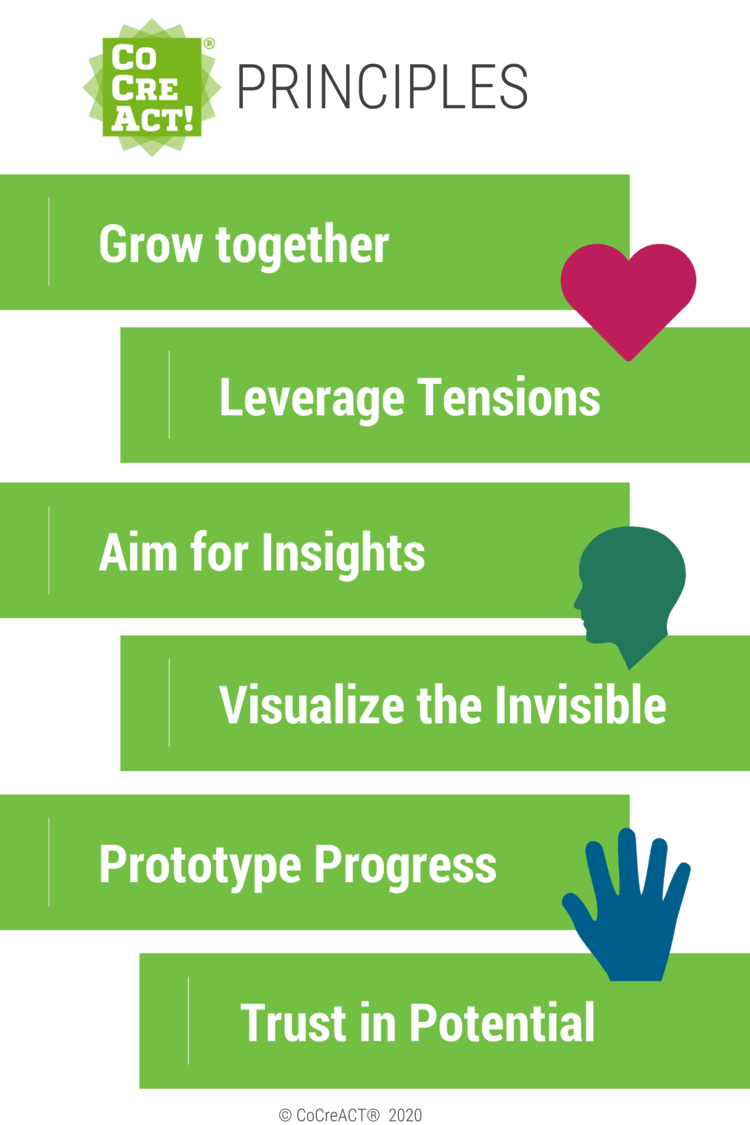Navigating Ambiguity (6/6): Trust in Potential
You can do it. Yes, you can!
Learning is an essential function of our existence. We evolve through iterative feedback loops: We act, we reflect on our efforts and then we make choices in the future based upon that cycle. Fortunately, learning also creates a developmental pathway of action through ambiguous situations. Facing ambiguity is a fantastic opportunity to learn. Why not? Things are uncertain so you may as well try new things and explore!
All this talk about learning suggests that it is, in fact, possible to learn new things, to develop your skills, to GROW. Do you believe that is possible for you? Do you truly believe you have the potential to evolve beyond what you are capable of today? We sure hope so. This kind of thinking, known as a Growth Mindset, is characteristic of people who deliberately invest more energy in their learning and achieve more as a result. The alternative, known as a Fixed Mindset, is rooted in a belief that intelligence is fixed and talent is innate so there is no point in trying to overcome challenges and get curious about feedback. In other words, what you are determines what you get and what you are ain’t changing. The good news is that we can actually learn to shift our mindset for growth and encourage others in doing it, too.
Find hope in the how
Sometimes the only thing that separates an idea from action is the distance created by doubt.
Do I know how to do this?
Should I even try?
I might fail.
What if I break something?
Will people think I’m foolish?
What does it take to implement an innovative idea or a novel solution to a perplexing problem? We already spoke in a previous post about the importance of prototyping progress, of having big aspirations while taking small steps. So here we’ll focus on another important element of crossing that chasm of doubt: courage. Getting past the uncertainty requires us to be brave, to boldly embrace optimism and be willing to fail so that we can learn and grow.
Those who believe it can’t be done are typically those who are unwilling to try. If you want to take action, to move an idea forward, you are going to have to “put yourself out there” and take a risk. This can be scary, of course. They’re called “growing pains” for a reason- because we are learning, and sometimes it hurts! Proceeding with the objective of learning along the way-- committing to emerge from an action with more wisdom than when you started-- is one simple way to nudge yourself into that first step. It also helps to remind yourself that although change may create stress as we move away from the old and into the new, this stretching is actually a pretty good workout for our learning muscles.
It takes a village to raise an idea so working with others is a great way to evolve potential. Oftentimes, what it takes to come up with a great solution is a different skillset than what it takes to actually implement that solution. No surprises there. What is perhaps less obvious is how collaboration, especially over time and various projects, can provide cross-functional skill development and deeper understanding of other areas of expertise. It’s akin to learning a new language; the more we understand each other, the less likely we are to lose meaning in translation. The more we are willing to learn from each other, the more likely our “cross-training” will contribute to solutions that integrate diverse expertise. Do you dare to learn?
Transformation on and in
It’s one thing to implement a solution as planned, to check the boxes, measure progress and proceed through the milestones to make change happen. It’s another thing entirely to pursue such transformation with the added intention of building capacity. With business-as-usual we tend to ensure that everyone knows their role and responsibilities and adheres to the goals and tasks of the predetermined plan. Can work get done this way? Of course, it has for centuries. Does this approach foster a Growth Mindset? Um… not on purpose.
Sure, sometimes people accidentally learn a new skill or get the opportunity to train in an adjacent position, but many of these learning opportunities happen outside of daily operations. They involve simulations or case examples, theory and So. Many. Powerpoints.
We believe in learning by doing, rolling up your sleeves and working shoulder to shoulder with the experts on real life challenges. When we make a deliberate effort to upskill ourselves and each other during the implementation of an idea, we demonstrate our commitment to evolution for all. Our actions signal a belief that what we do is as important as how we do it.
The Art of Letting Go
In essence, we must recognize that as we make progress in our efforts to change the status quo, we are also changing ourselves- how we feel, think and do. As we do the work of transforming the system, the system responds and transforms us. It’s a reflexive cycle where the individuals and the system continually influence each other. This happens whether we are aware of it or not so we may as well be deliberate about it.
When we are thoughtful about leading in ambiguity, we become facilitators of these transformations, expanding our focus from outcomes and metrics to include the possibilities of growth and development; new skills and talents emerge. Of course this demands a unique kind of leader- someone who has the courage to step back and let others step forward; a leader who is also willing to be a learner.
Trusting in others’ potential means we have to be willing to relinquish control, “let that s#*! go” and see what happens when people are given the space for transformation to unfold.
Spark learning through collaboration
While some skills may be more difficult to learn, others are quite ubiquitous and domain-agnostic. Once learned they can be adapted across a range of fields. Wouldn’t it be great if being involved with a project meant that everyone on the team also got to learn the fundamental toolset, skillset, and mindset that generated that solution? This requires a level of commitment and transparency (and capable facilitators) that are not difficult to embed into a project if considered early on, as a core priority. This type of collaborative and experiential learning also fosters a sense of shared purpose, learning agility, and organizational resilience.
Paving the way for innovation in higher education, Arizona State University explicitly states in their charter their desire to be “Measured not by whom it excludes, but by whom it includes and how they succeed.” One powerful example of this commitment to growing the potential of many is the SPARK method and training. What began a few years ago as a hackathon in the business school has developed (through many iterations!) into an innovation process and toolkit that can be used by faculty and staff across the university. To date, 275 facilitators have completed the training and practicum with 50+ on the waitlist. Now a department can request a content-neutral facilitator from a different college to lead the process with their team. In this way, ASU is building their innovation capacity by empowering everyone across the organization with these disciplinary-agnostic capabilities.
Futureproof your capacity to thrive
What we do today has plenty to teach us about what we can and will do in the future. We must believe that what we can learn from our experiences, and experiments, and each other is an investment that will prepare us for what the future will demand of us. Let’s get deliberate about growth and evolution and have faith in our ability to find big opportunities in ambiguity.
Trust in Potential means to inspire courage, to nurture collective wisdom and to commit to learning along the way (for yourself and those around you!).
😢 Well, boo. This is the last of our 6-part series of posts about principles for acting in ambiguity. We are sad that it’s come to an end but of course we have more in store! Join our CoCreACT.community to learn, connect with other Ambiguity Activists from around the globe and stay up to date about upcoming virtual events. And please feel free to reach out to us if you have questions or requests for how to build capabilities to navigate ambiguity. We trust in your potential!
If you’ve missed our introduction about our principles to navigate ambiguity, please continue reading...
WHY PRINCIPLES TO NAVIGATE AMBIGUITY?
CoCreACT® Principles
Now more than ever we need to adopt new ways of being. We need to find simple and powerful approaches to ambiguity that reveal the possibilities of new worlds. The key pillars of ambiguity activism that we outline in our CoCreACT® approach aim to do precisely that:
Co - new ways of feeling: We are in this together. Shared purpose gives us strength and direction and connection. Owning our collective uncertainty inspires us to deeper understanding and new perspectives.
Cre - new ways of thinking: In the unknown, our understanding and imagination must have fertile space to grow so that we can co-create new knowledge and solutions. This is only possible when we are able to communicate the ambiguous in experiential ways that foster compassion and creativity.
Act - new ways of doing: Trailblazing does not follow a straight and predetermined path, so we prototype forward. Our progress comes from iterative cycles of experimenting and learning. We can’t evolve through control, but through lifting each other up and being better together than we could ever be alone.
Developing an ambiguity activist mindset requires feeling, thinking, and doing in new ways. To illuminate the path forward, we have developed six essential principles for finding the big possibilities in ambiguity.




